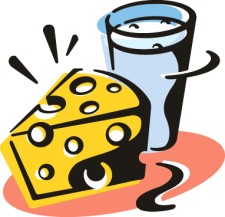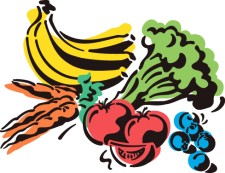True/False Tests
True/false tests seem easy. All you have to do is read a statement and decide whether the statement is true or false. At the very worst, you have a 50-50 chance of being right. But would you be pleased with a test grade of 50? Of course you wouldn’t.
True/false tests are a lot more difficult than they seem to be. They test very specific factual knowledge. Nothing can replace having the knowledge. But even if you do have the knowledge, there are some guidelines you should follow to make sure you demonstrate your knowledge.
Guidelines When Taking True/False Tests
Here are some guidelines that will help you correctly answer true/false items.
- Choose True for an item only when you are certain that the entire statement is true. This is especially important when the item contains more than one “fact.”

Guidelines When Taking True/False Tests
Read the following statement:
Milk, cheese, and butter are all in the dairy food group.
This statement is true because all three of these foods are part of the dairy food group.
Now read this changed statement:
Milk, lettuce, and butter are all in the dairy food group.
This statement is false because while milk and butter are in the dairy food group, lettuce is not.
- Be very careful when a statement contains a negative word such as not or a negative prefix such as un as in the word unfriendly. A negative word or prefix completely changes the meaning of a statement.
Read the following two statements:
Directions given by teachers should be very clear.
Directions given by teachers should be very unclear.
The first statement is true, while the second is false. At a quick glance, these two statements might seem the same. It is always important to read a statement carefully. It is especially important to do this when the statement contains a negative word or prefix.
- When a statement contains two negative words and/or prefixes, cross out both. Two negatives typically make a positive, but in a very confusing way.
 Read the following statement:
Read the following statement:Eating a balanced diet is not unhealthy.
This statement is true, but in a confusing way.
Now read the same statement with the negatives crossed out.
Eating a balanced diet is
notunhealthy.The statement has now become:
Eating a balanced diet is healthy.
It is now a much easier statement to understand as true.
- An absolute statement is usually false. An absolute statement contains words such as the following: all, none, always, every, never, only, and no. Each of these words suggests that there are no exceptions.
Read the following statement:
The official language of all the countries in South America is Spanish.
This statement is false because of the absolute word all. Spanish is the official language of 9 of the 13 countries in South America. The exceptions are Brazil (Portuguese), French Guiana (French), Guyana (English), and Suriname (Dutch).
- A qualified statement is usually true. A qualified statement contains words such as the following: some, many, usually, most, sometimes, may, and often. These words allow for exceptions.
Read the following statement:
The official language of most of the countries in South America is Spanish.
This statement is true because of the qualified word most.
- If you are uncertain whether a statement is true or false, take your best guess unless there is a penalty for wrong answers. If you have absolutely no clue, choose True as your answer. Research has shown that true/false tests typically contain more true statements than false statements. This is because teachers typically use tests not only to assess what you have learned, but to reinforce what you have learned.
True/false tests can be tricky. Use these guidelines to do your best.
